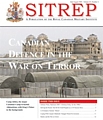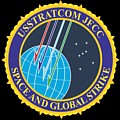Report Shows Prominence of Nuclear Weapons in Global Strike Mission
 Nuclear weapons are surprisingly prominent in the Pentagon’s new offensive Global Strike mission, according to the new FAS report Global Strike: A Chronology of the Pentagon’s New Offensive Strike Plan. The 250-page report traces the development of Global Strike through a comprehensive compilation of guidance documents, public statements, budget program descriptions, contracts, and declassified military documents obtained under the FOIA.
Nuclear weapons are surprisingly prominent in the Pentagon’s new offensive Global Strike mission, according to the new FAS report Global Strike: A Chronology of the Pentagon’s New Offensive Strike Plan. The 250-page report traces the development of Global Strike through a comprehensive compilation of guidance documents, public statements, budget program descriptions, contracts, and declassified military documents obtained under the FOIA.
One of the FOIA documents is the Concept of Operations for the Joint Functional Component Command for Space and Global Strike, the new organization established in 2005 at U.S. Strategic Command to prepare and execute the Global Strike mission. The mission is normally portrayed as a conventional mission, but the Concept of Operations reveals the prominent nuclear role the command has.
Publication of the FAS report coincides with a Senate Armed Services Committee hearing on Global Strike on March 16. [Update: Hearing postponed. Check link for details.]
Download: The full report | Background information and FOIA documents.
Navy Personnel Ordered Not To Discuss Public Nuclear Policy
The US Chief of Naval Operations has publicly issued an Instruction that orders US Navy personnel not to tell anyone that US warships do not carry nuclear weapons. Yet the same Instruction states that it is US policy not to deploy nuclear weapons on the ships.
The new Instruction, “Release of Information on Nuclear Weapons and on Nuclear Capabilities of U.S. Forces,” was published on February 6 and updates a previous version from 1993. Both versions state that nuclear weapons were offloaded from the ships in 1992.
The reason for updating the Instruction is to incorporate four guided missile submarines (SSGNs) that are being converted from ballistic missile submarines (SSBNs). The SSBNs carry nuclear weapons, but the SSGNs will carry conventional weapons, the publicly available Instruction helpfully informs (!).
German Parliament To Debate US Nuclear Withdrawal
A resolution introduced in the German Parliament last week calls for the withdrawal of U.S. nuclear weapons from Germany. The resolution, which was submitted by nine parliamentarians from the newly formed party Die Linken, also calls for the German Air Force to end its controversial NATO mission to deliver U.S. nuclear bombs in times of war.
The U.S. Air Force currently has some 440 nuclear bombs in Europe deployed at eight bases in six NATO countries. About 76 percent of Germans favor a withdrawal, but NATO insists the weapons provide a crucial bond between Europe and the United States.
NATO’s defense ministers are set to meet in Taormina, Italy, on February 9-10 for an informal meeting. Nuclear weapons are not on the agenda.
Pentagon Cancels Controversial Nuclear Doctrine Documents
The Pentagon has formally cancelled a controversial revision of its Doctrine for Joint Nuclear Operations after the document was exposed last year in an article in Arms Control Today and described in the Washington Post.
The revised draft doctrine included for the first time descriptions of preemptive use of U.S. nuclear weapons, which prompted the Senate Armed Services Committee to ask the Pentagon for a briefing, and 16 lawmakers to protest to President Bush.
The decision to cancel Doctrine for Joint Nuclear Operations, and with it three other related nuclear documents, was confirmed today by the Pentagon. The cancellation of the documents does not change U.S. nuclear policy which continues to include options for nuclear preemption.
See background briefing and analysis and copies of the doctrine documents.
Article: Preparing For The Failure Of Deterrence
 The Royal Canadian Military Institute (RCMI) has published an article by FAS’s director of the Nuclear Information Project about how U.S. nuclear planners are preparing for the failure of deterrence by putting new strike plans into operation onboard long-range bombers and strategic submarines. This includes options to strike preemptively with nuclear weapons, if adversaries make preparations to use weapons of mass destruction. Some U.S. lawmakers (see below) recently objected to such a broadening of the role of U.S. nuclear weapons.
The Royal Canadian Military Institute (RCMI) has published an article by FAS’s director of the Nuclear Information Project about how U.S. nuclear planners are preparing for the failure of deterrence by putting new strike plans into operation onboard long-range bombers and strategic submarines. This includes options to strike preemptively with nuclear weapons, if adversaries make preparations to use weapons of mass destruction. Some U.S. lawmakers (see below) recently objected to such a broadening of the role of U.S. nuclear weapons.
Lawmakers Object To Nuclear Doctrine
 Sixteen members of Congress have asked President George W. Bush to intervene in the Pentagon’s revision of Doctrine for Joint Nuclear Operations. In a joint letter published by Representative Ellen Tauscher’s office, the lawmakers object to language that appears to broaden the role of U.S. nuclear weapons. The letter follows my critique of the doctrine in Arms Control Today and a subsequent front-page story in the Washington Post.
Sixteen members of Congress have asked President George W. Bush to intervene in the Pentagon’s revision of Doctrine for Joint Nuclear Operations. In a joint letter published by Representative Ellen Tauscher’s office, the lawmakers object to language that appears to broaden the role of U.S. nuclear weapons. The letter follows my critique of the doctrine in Arms Control Today and a subsequent front-page story in the Washington Post.
Global Strike Command Achieves Initial Operational Capability
 On November 18, 2005, U.S. Strategic Command’s new Space a Global Strike command achieved Initial Operational Capability (IOC) at Offutt Air Force Base, Nebraska. The new command, is tasked with implementing the new Global Strike mission assigned to STRATCOM in 2003. This includes CONPLAN 8022, a new strike plan that includes preemptive nuclear strike against weapons of mass destruction facilities anywhere in the world.
On November 18, 2005, U.S. Strategic Command’s new Space a Global Strike command achieved Initial Operational Capability (IOC) at Offutt Air Force Base, Nebraska. The new command, is tasked with implementing the new Global Strike mission assigned to STRATCOM in 2003. This includes CONPLAN 8022, a new strike plan that includes preemptive nuclear strike against weapons of mass destruction facilities anywhere in the world.
Rumsfeld: Europeans Keep Nukes In Europe
 During an interview with the German magazine Der Spiegel on October 31, U.S. Defense Secretary Donald Rumsfeld suggested that it is European governments, not the United States, that are responsible for the lingering deployment of U.S. nuclear bombs in Europe. Rather than defending the mission of the weapons, Rumsfeld said: “Some European countries in Europe made the decision to allow them to be on the continent. It was seen to be in their interest and is still seen that way today.”
During an interview with the German magazine Der Spiegel on October 31, U.S. Defense Secretary Donald Rumsfeld suggested that it is European governments, not the United States, that are responsible for the lingering deployment of U.S. nuclear bombs in Europe. Rather than defending the mission of the weapons, Rumsfeld said: “Some European countries in Europe made the decision to allow them to be on the continent. It was seen to be in their interest and is still seen that way today.”
Background: U.S. Nuclear Weapons In Europe
Missions for Nuclear Weapons after the Cold War
This report (PDF) examines currently proposed nuclear missions and finds that the United States is witnessing the end of a long process of having nuclear weapons be displaced by advanced conventional alternatives.
The most challenging nuclear mission is a holdover from the Cold War: to be able to carry out a disarming first strike against Russian central nuclear forces. Only if the US and Russia abandon this mission will meaningful reductions in the two largest arsenals be possible.